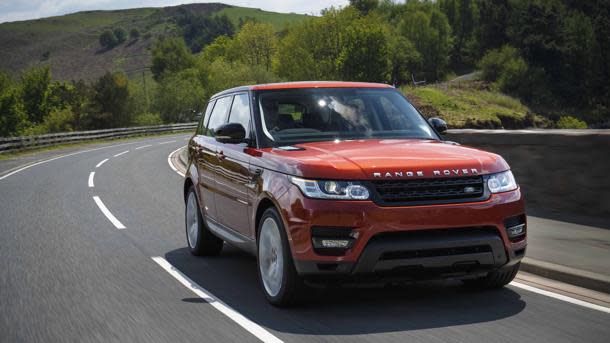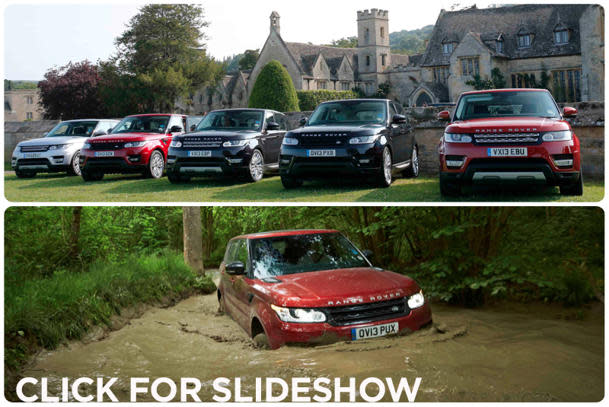 Motoramic
Motoramic2014 Range Rover Sport, attempting compromise without compromising: Motoramic Drives
“Compromise is but the sacrifice of one right or good in the hope of retaining another – too often ending in the loss of both” -- Tyron Edwards.
So when Land Rover announced the 2014 Range Rover Sport would be the “fastest, most agile and responsive Land Rover ever,” dueling with the BMW X5 and, now, venturing towards the Porsche Cayenne GTS, while still maintaining its Land Rover heritage and “all-terrain capability,” you can excuse me for being a tad dubious.
Land Rover are well aware that its name remains synonymous with off-road proficiency, therefore the compromise made when blending sporty on-road dynamics with muddy, rock-infested trails clearly stands to err on the side of caution.
How can you possibly achieve both?
Even the design, while plenty attractive, looks like a blend of the 2013 Range Rover at the front and the highly successful Range Rover Evoque at the rear. There’s no sporty identity – just a good-looking car that mimics its siblings.
Inside, too, you’d be hard-pressed to dissect the difference between the big Range and the Sport. That’s not meant as a negative; the interior is one of the best on the market, meshing luxury with a unique style that’s all but lost amongst many luxury carmakers. The only real difference is the optional third row seating that exists for tiny people. Or for drunks in need of a ride home. One of Land Rover's engineers said, “I’d rather get in it than walk.” Me too. And with an additional inch of legroom in the second row, most passengers will roll in pristine comfort, something that lacked with the outgoing model.
One fact aiding Land Rover’s quest in achieving the ultimate compromise, is the brand’s use of aluminum for the body. This first debuted in the big Range Rover and is now making an appearance on the Range Rover Sport, saving the car around 800 lbs. when compared to the outgoing model. That certainly stands to make a huge difference dynamically.
But when driving the V-6 Range Rover Sport, featuring a new 3.0-liter supercharged motor delivering 340 hp and improved fuel efficiency over the outgoing car, the promised sportiness seemed vague. You can feel the compromise, sensing a lack of power while displaying handling akin to its big brother; it’s like you’re driving a slightly smaller version of the 2013 Range Rover. That’s not a bad thing at all, and with the price of the new Sport starting at $63,494, considering what you get, that’s actually not a bad deal.
But those that buy a Range Rover Sport, probably care somewhat about its “sportiness.”
The V-8 Sport boast a 5.0-liter supercharged motor, good for 510 hp and 461 lb-ft of torque. With the hefty weight loss, it sprints to 60 mph almost a second faster than the outgoing model, now at 5.0 seconds. That’s seriously quick. It’s 0.4 seconds faster than the Porsche Cayenne GTS, for Pete’s sake. It also sounds like a true V-8, offering a deep bellow and a few faint pops and gurgles.
Pressing the Dynamic mode livens the throttle, increases steering feel, and sharpens gearshifts from the 8-speed automatic with paddles shifters. When going straight, there’s little doubt the V-8 Sport lives up to its name. But what about through the corners?
Starting at $79,995 for the Supercharged model, the V-8 Sport offers a host of technical improvements, such as adaptive dampers. The two best qualities are the electronically locking center and rear differentials, featuring torque vectoring and, most notably, active roll control. The latter maintains the platform of the car during hard cornering, keeping the body flat and solid. To me, it made the car come alive, like it donned entirely new, stiffer springs, but yet the ride felt entirely unchanged. It also musters a 50/50 weight distribution, and with the third row seating, that might end up becoming slightly rearward – unbelievable for a comfy off-road SUV.
Despite this, it isn’t quite a match on-road for the Cayenne GTS, but nor is it supposed to be. For starters, the Cayenne sports summer performance tires, while the Range comes with all-weather rubber capable of the most incredible off-road driving imaginable. The fact the 2014 V-8 Range Rover Sport is even mentioned in the same breath as the Cayenne GTS on-road, given its tire limitations, remains simply wild.
Of course, when you take the Sport off-road, whether in a V-6 or V-8, the Range simply crucifies its opposition. Like with the big Range Rover, automatic terrain response now comes equipped, allowing drivers to concentrate on driving rather than deciphering the correct vehicle settings, based on conditions faced. It handled deep, thick mud. It handled steep, slippery slopes. It even let me drive through a river – yes, a river – without pause for concern.
All this performance comes with better fuel economy, up to 27-percent in the V-6 model – although EPA numbers are not yet released. In the V-8, the compromise was achieved with seemingly minimal compromise. And while the V-6 felt more at ends, it did feel spookily like its big brother, only $20,000 cheaper.
Winston Churchill once said, “The English never draw a line without blurring it.” But in the case of the V-8 Range Rover Sport, that statement has finally been defied.

 Yahoo Autos
Yahoo Autos 

